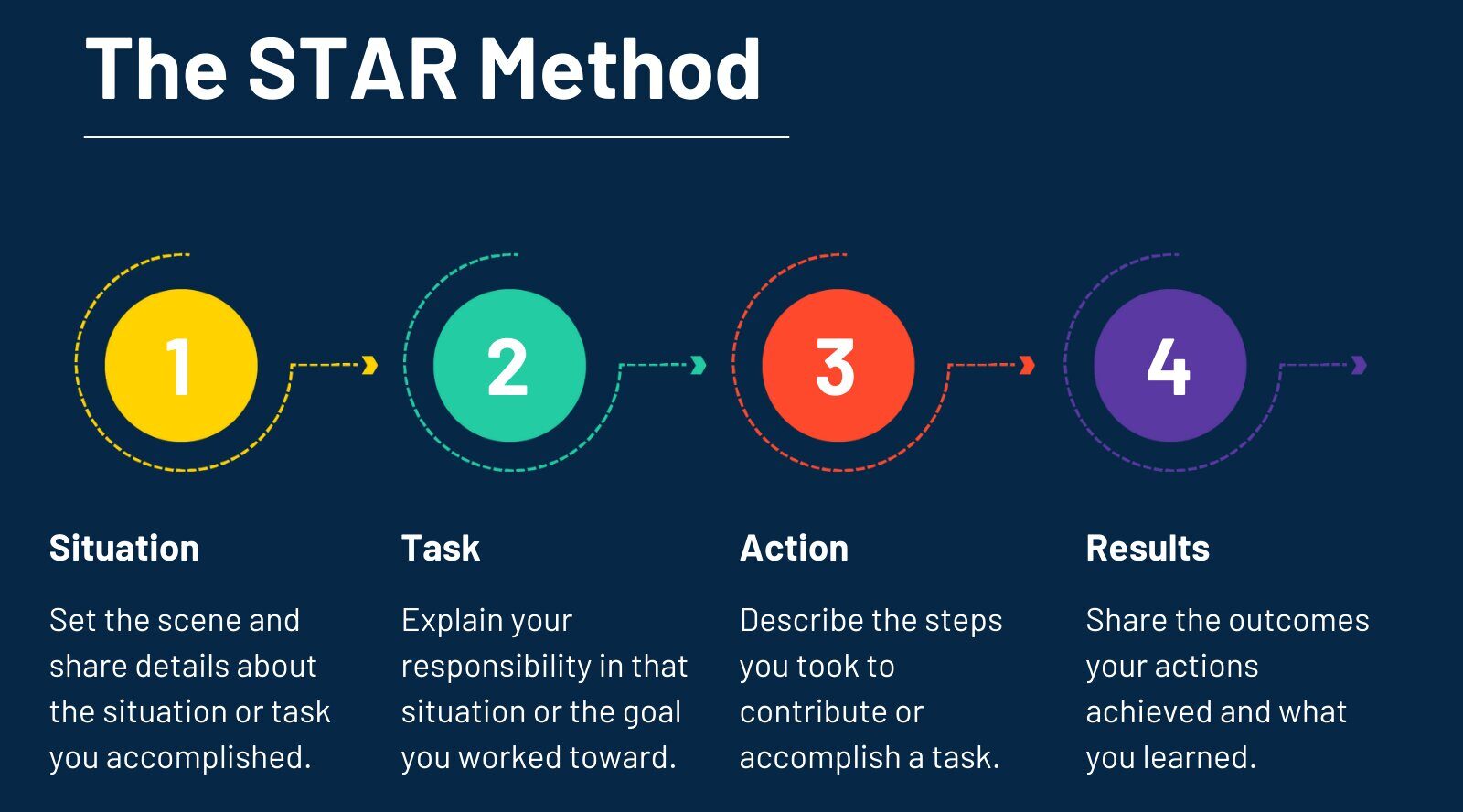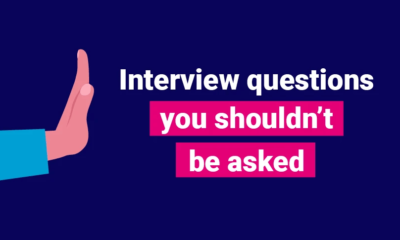Career Tips
How To Answer Interview Questions With The STAR Method

The STAR interview answer strategy might make the process go more smoothly. Using this way of answering interview questions helps you to provide real instances of how you effectively addressed situations at work to demonstrate that you have the necessary experience and skills for the position you’re interviewing for.
STAR: Situation, Task, Action, Result
STAR stands for Situation, Task, Action, Result. Using this strategy is particularly helpful in response to competency-focused questions, which typically start with phrases such as, “Describe a time when…” or, “Share an example of a situation where….”

What Is the STAR Interview Response Method?
The STAR interview response method is a way of answering behavioral interview questions. They focus on how you handled work issues.
This method helps employers identify high-performing job traits and skills. Interviewers ask these questions because past performance can predict future performance.
Employers may search for problem-solving, analytical, creative, perseverance, writing, presentation, teamwork, persuasive, quantitative, or accuracy skills.
Examples of behavioral interview questions include the following:
- Tell me about an occasion when you had to complete a task under a tight deadline.
- Have you ever gone above and beyond the call of duty?
- What do you do when a team member refuses to complete his or her quota of the work?
Some interviewers structure their questions using the STAR technique. However, job seekers can also use the STAR interview method to prepare for behavioral interview questions.
STAR Key Concepts
The word STAR stands for four fundamental concepts. Each notion represents a stage that the job candidate can take while responding to a behavioral interview question. The job candidate will deliver a detailed answer if all four steps are followed. The acronym refers to four steps, which are as follows:
S for Situation. Describe the situation where everything happened.
T for Task. Describe the task you had to complete in order to solve the problem/issue at hand.
A for Action. Explain what actions you took to complete the aforementioned task.
R for Results. Talk about the results of your actions and try to be as detailed as possible. How did your actions lead to the company or organization to function better?
Now, here’s what a good answer looks like according to the STAR method:
Q: Tell me about a time you had to complete a task within a tight deadline. Describe the situation and explain how you handled it.
A: I can meet tight deadlines and provide high-quality work. A former employee left days before a project deadline. With only a few days to learn and finish the job, I was given the responsibility. I formed a task force and assigned duties, and we finished in a day. I thrive under tight deadlines.
Q: Give us an example of how you handled a challenge in the workplace.
A:Situation – When I began at Company X, my team was finalizing a crucial project on a tight schedule. They had to evaluate everything before sending it to the client, so my manager didn’t have much time to keep me up to speed.
Task – Everyone around me was constantly working, and because of the timing, they didn’t seem very approachable. So, to make sure I didn’t get left behind, I had to prove myself and take initiative.
Action – I had a simple plan. I wanted to chat with my manager and a few coworkers over lunch or coffee. I would then try to learn more about them and the company in a different setting. I reviewed my onboarding materials and tools to improve my job.
Results – At last, everything worked perfectly and I made some nice friends. I knew most of my work and the company’s primary clients by the time my manager reviewed it and discussed next moves. I knew my coworkers too. He was shocked, but glad I didn’t fall behind. He was glad for this.
Now, to make sure that you’re 100% ready for any behavioral interview question the recruiter can throw at you, we’re going to cover 21 of the most common questions out there.
Q: What do you do when a team member doesn’t complete their share of the work?
A: When team problems arise, I strive to lead. My communication skills help me lead and moderate. One day, two team members argued and refused to do their responsibilities. I called a team meeting to reorganize their duties. Our project succeeded because everyone was happier and more productive.
Q: Tell me about a time you showed initiative on the job.
A: I supported an ad agency account executive for a major client last winter as an account coordinator. The account executive was injured three weeks before a key advertising pitch.
I volunteered to coordinate the input of the creative and media teams’ presentation. I scheduled an emergency meeting to review ad scenarios, media planning, and team roles in the presentation.
I reached consensus on two priority ad concepts and media strategies. I planned the pitch minute-by-minute. The team liked the plan after our talks. The client liked our advertising. I became account executive six months later.
Q: Tell me about a time you set a personal goal for yourself. How did you ensure you would meet your objectives and what steps did you take?
A: Situation – My most recent and significant personal objective was teaching myself web development. As a Company X sales rep, I was unhappy. I liked my teammates and the income, but I didn’t see myself progressing there.
Task – So, I decided that I wanted a career change in a field I’ve always been interested in – web development. Now, because I was working full-time, I had to be very efficient with my time-management skills.
Action – After some study, I only had to stick to my schedule. I scheduled two hours a day to study HTML, CSS, and JavaScript in my calendar. I started with beginner-friendly books, then bought advanced online courses to improve my React and Vue.js skills. I started working on portfolio projects and freelance work part-time when I felt comfortable.
Results – I’m delighted I followed my plan. I would have been overwhelmed without a calendar with goals. It seemed like I was working two jobs and that most of the content didn’t make sense. I persevered and earned my first genuine chance as a junior web developer at Company Y.
Q: How do you handle disagreement with your colleagues? Tell me about a time you persuaded someone at work to see things your way at work.
A:Situation – As a recruiter for Company X, I saw that one of the applicants was ideal. Though he didn’t have a degree and his resume wasn’t polished, his cover letter showed he knew the industry and had delivered outcomes.
Task – I thought it was worth giving him a shot, but my supervisor didn’t see it that way. She skimmed through the resume and told me not to waste time, and just discard the candidate.
Action – I told the supervisor during lunch that I still believed in the candidate. I approached indirectly. I asked her to clarify the job description instead of pitching the candidate to her. After describing what we were looking for in a candidate, I told her that we had a candidate with all the essential experience but a weak resume.
Results – Convinced, the supervisor proceeded to look into the candidate’s application further and discovered that they were, in fact, quite qualified. She thanked me for bringing it up and agreed that the candidate was deserving of an interview.
What can you do when you can’t think of an answer to an interview question?
When you’re asked a challenging question, use the STAR interview technique to respond. Think of something you did at work related to the question, then explain how you handled the situation and what the outcome was.
For more Behavioral job interview questions click here




















